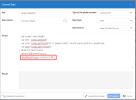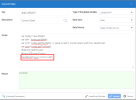Version 2023 Release 11 (September)
Web Client Build Number: 23.0.11.10071
Excel Add-in Build Number: 23.0.11.10071
DataSync Build Number: 23.0.11.10071
SEI for Sage 300 Embed Build Number: 23.0.11.10071
September 23, 2023
Breaking Changes
-
As of October 10, 2023, Windows Server 2012 R2 will no longer be supported by Microsoft nor by SEI.
-
As of the July 2023 release, we no longer support HTML export. Please ensure to edit your distribution jobs settings, the output will be done in a different format.
-
For On-Premise customers using a version before the July Release 8, we highly recommend upgrading your Excel Add-In. 20318
Improvements
Web Client
-
The Web Workbook:
-
Excel formulas will be dynamic when exporting a workbook in xlsx format. 22496
-
New options to set formulas in Manual or Automatic mode. 22803
-
The possibility to set different Themes for Web Workbook. 22803
-
Fixes
Web Client
-
When there is no data within the web workbook, exporting the workbook inside of a template would throw an error. 22841
-
In a Report, the Custom Calculation would show an extra column for Pivot Total even when if it was disabled. 11954
-
Removed the prompt icon within the Execute Stored Procedure popup that was being displayed when it was not required. 22919
-
A job containing a view with Google Map would either fail or remain in running status. 22893
-
Increased the size of the SQL Script Builder window to accommodate the size required to display the list of fields. 18718
-
Following the JQuery upgrade from Release 8, enhancements were made to fix UI glitches.
Web Client Templates
| Template | Change description |
|---|---|
| Universal Data Model |
|
| Sage Intacct |
|
| Sage X3 |
|

